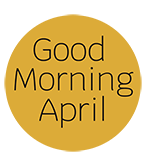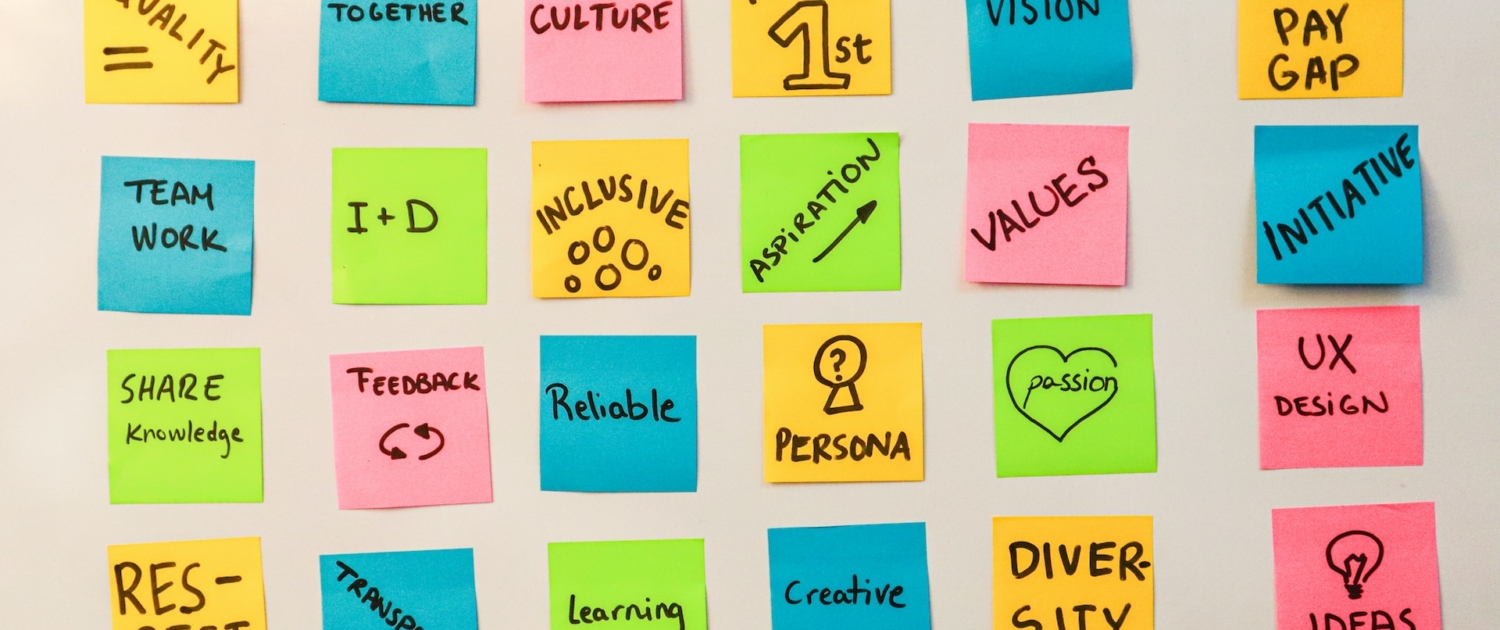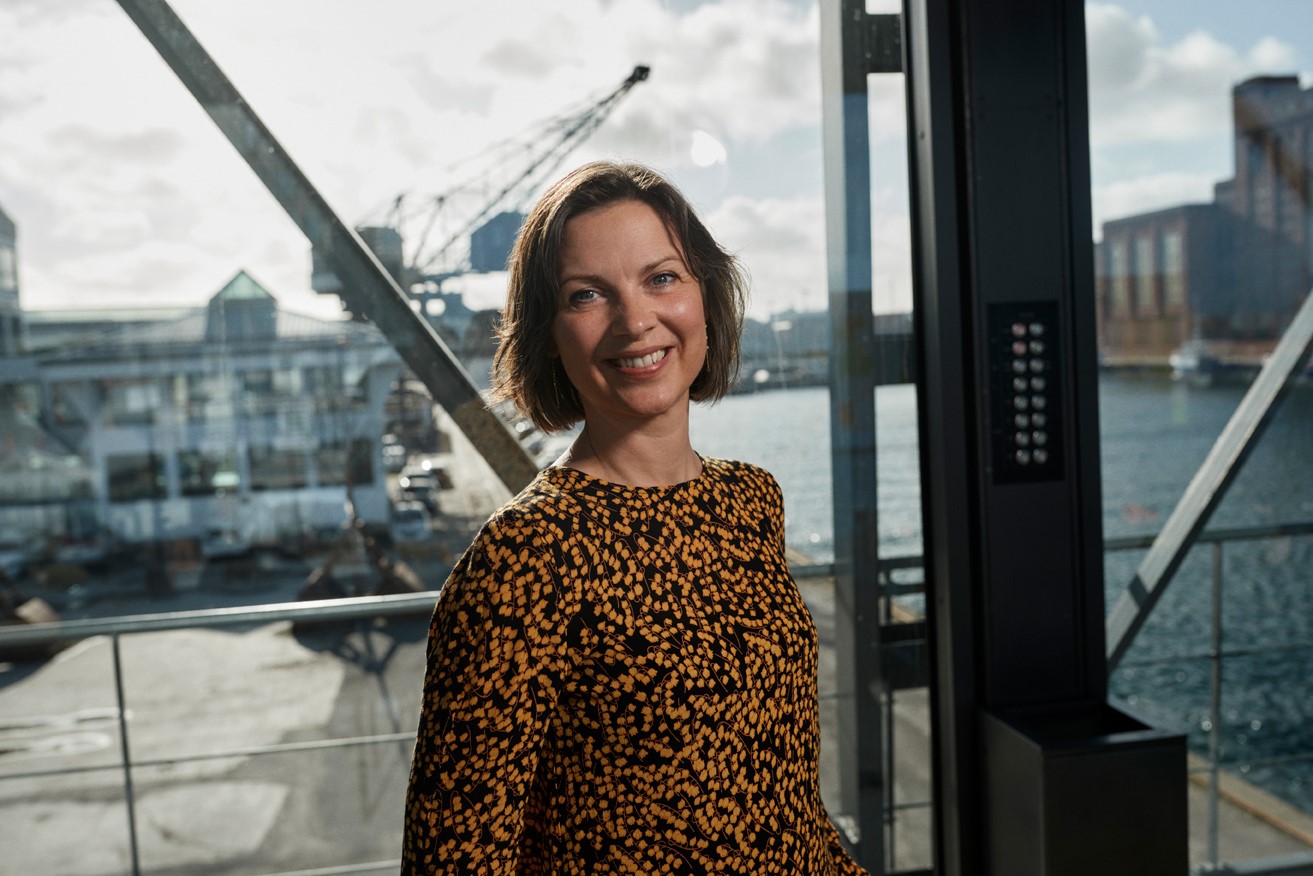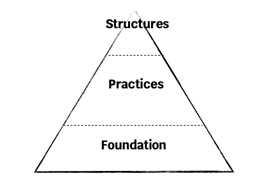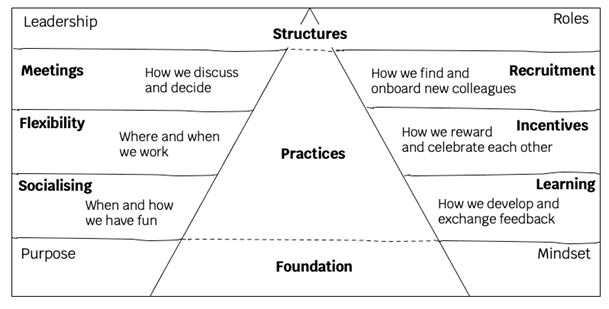Ever been disillusioned by company values just being a poster on the wall? Struggle translating what you believe in into ways of working in your company? If yes, it is no surprise. Culture development has long been too intangible, confined in the People and Culture team or just ignored as being too fluffy.
The Culture Canvas is a framework for intentionally designing a tangible organizational culture where what we say is what we do.
By Thea Tolstrup Bramming
30th of March 2023
The canvas is made for start-ups and scaleups. However, it can also inspire more mature organizations in their culture work moving from the classic hierarchical organization to more agile and teal ways of working.
The key idea of the canvas is that culture lives and develops in the structures and everyday practices of the organization. These structures and practices rest on a cultural foundation. However, only working with this foundation will not help you develop your culture. You need to constantly ensure that the foundation, the structures, and the practices are aligned to create a trustworthy and tangible culture.
The Organizational Culture Model in figure 1 illustrates the connection between the three elements:
A. Foundation,
B. Structures and
C. Practices, that make out the core elements of The Culture Canvas.
The elements are described in the following.
A. Foundation – the first element of The Culture Canvas
The foundation of any organizational culture has its roots in two elements, the main purpose, and the prevailing mindset.
Purpose
Most companies in today’s world, are aware of the importance of a purpose (formerly known as mission/vision). In many cases, purpose is regarded as part of the branding and marketing strategy, rather than of internal importance. Yet, the purpose is at the core of what will drive us in our everyday work. What are we here for, what motivates us and gives us a common focus as an organisation? Are we primarily here to generate profit, to save the planet or maybe to develop great products? The three do not have to be exclusive, but being aligned in the founder or leadership team – and aware of what comes first – is extremely important for the culture that you will develop.
Mindset
The other part of the foundation is the mindset, traditionally found in the company’s values. Mindset is the way we think about people, our core believes as founders and leaders. Typically, this is how we think about culture; the idea that if we define our values, we have developed our culture. But to develop a tangible culture, we must understand mindset only as an element of the cultural foundation. The offset. Mindset in the form of principles, believes, virtues – or values – should be super clear – always. Founders, leaders and teams should spend time discussing and aligning on mindset on an ongoing basis. Based on that, the real culture work begins. Now it’s time to move from words to action.
Being intentional about aligning the structures and practices with the cultural foundation is how a culture is developed. In this perspective, culture is embedded in almost everything we do, and developing your culture can become over-whelming. This is where The Culture Canvas comes in handy.
As seen in figure 2 below, the base of the canvas is the cultural foundation. Purpose and mindset inspire and inform the other elements in the canvas. As founders or leaders, make sure to create clarity and alignment here first, before venturing into the other parts.
B. Structures – the second element of The Culture Canvas
At the top you find the structures of the organization. This means, how we lead and how we divide roles and responsibilities. Traditionally, we think of a company structure in the form of the hierarchical organizational chart. Leaders are at the top and below we have employees with clear job descriptions defined by management.
Even though, we rarely think about it, this type of organizational structure in based on a specific cultural foundation. It comes from a time (the industrial revolution) when purpose was mainly profit/productivity maximization and the mindset was (roughly speaking) that the leaders and managers can and should predict the future, and workers and processes should be controlled from the top (also known as scientific management or Taylorism).
Since its birth this structure has been iterated and developed into e.g. matrix organizations, but rarely truly challenged. At the same time, the cultural foundations of many companies have undergone a huge transformation with a focus on impact and innovation and a believe in inclusion, transparency, and other values, far from those prevailing during the industrial revolution.
During the past 20-30 years, we have seen new organizational models emerge, such as agile (e.g. SCRUM) or the so-called Teal or self-managing organizations. These structures are based on the mindset that the future is complex, and we need to constantly sense and respond to it throughout the entire organization, unleashing the innovation power and commitment of everyone.
With this larger selection of organizational structures, it is now possible to choose between more – or even develop new – structures, that will help your cultural foundation truly come alive.
C. Practices – the third element of The Culture Canvas
In between the foundation and the structures, we find the specific workings of the organization. The tangible practices and processes we follow as we work and collaborate. The canvas zooms in on six of those which are, in most cases, the first ones to build as a company. It is not an exhaustive list of organizational practices, more could and should be added as the company scales.
On the right side of the canvas, the “employee life cycle” practices are listed. This is what you experience as an employee in the company, from recruitment and onboarding through the different incentives and celebrations to your ongoing learning, development and growth – and at some point leaving the company.
On the left side you find the everyday practices of the teams. How we run our meetings and make decisions, where and when we work, and finally, how we socialize as a team. All key elements to any culture.
In traditional organizations, these practices are founded in the “predict and control” mindset. They are owned by the COO – perhaps delegated to HR or Finance – and rolled out across the entire organization.
In agile, fragmented, and self-managed organizations, most of the practices are owned by the teams. There are some general guidelines – often more structured and clearer than in traditional organizations. Teams can also get support from a people or finance function, but there are no central control mechanisms.
Again, knowing this, gives you as founders and leaders a bigger selection of practices to match your culture foundation, whether you go fully hierarchical or fully self-managed – or somewhere in between.
How to use The Culture Canvas
Having worked with culture development for many years, what I have often seen, is that founder and leader teams rarely pause to consider the cultural impact of the structures and practices that are being set in place. This can be due to time pressure or lack of awareness. But most often it is due to the lack of knowledge of different ways of doing things. Ways, that will support the culture development better, than what we have traditionally done.
Let’s have a deeper look.
As mentioned already, organisational structure is traditionally seen as a hierarchy. It is the perfect structure for the profit optimizing “predict and control” mindset of the industrial revolution.
What we are seeing today, however, is that this structure is put on top of very different, agile “sense and respond” mindset and impact focused purpose. The result is a culture mismatch where one thing is being said, but another done. Structures and practices are not aligned with the foundation.
Founders and leaders communicate a mindset of “transparency” and “inclusion”, yet decisions are made at the top and implemented through the management layers. The company is very focused on environmental impact externally, yet mainly sales and profit are being rewarded and celebrated internally. This creates disillusionment and kills motivation.
An example well help explain the mechanism. A company has “trust” as part of the culture foundation. The mindset is that “everyone can be trusted to do what is best for the company”.
Now, the company (founders/leaders/teams) must decide what structures and practices will make that principle become real. Below are two possible (simplified) practices they could decide to implement.
Practice 1: We (the leadership) set KPIs for everyone. We then assess everyone’s work and results based on pre-defined measurements, e.g. numbers of support calls, or new customers. If employees reach the targets, they get a bonus or a promotion (this is an incentive practice)
Practice 2: We (the leadership) set a clear purpose for the company. Everyone can make decisions within the roles they hold, provided they ask relevant colleagues for advice to qualify if the decision is best for the company purpose (this is a meeting practice).
The first practice is misaligned with the foundational principle as it sends the message that we do not really believe that you know what is best, and that you will do so unless we pay you extra to do it. It thus undermines the culture foundation of trust.
The second practice is aligned with the principle. Truly delegating decision power shows that the trust is real, and it is shared across all roles and baked into the way we work together. With this mindset-aligned practice, the culture foundation and has become reality.
Working with The Culture Canvas helps you create a culture that is woven into the fabric of the way we lead, work, and collaborate. It makes what used to be fluffy, tangible. No longer “just words” but action.
The Horizon Scanning Document on the Futures of Work
It’s called a ‘Horizon Scanning’ document because we scout into the horizon to see what developments and movements that are coming towards us.
We stand on our toes – or even a ladder – to get a glimpse of the anomalies and odd happenings, that might affect us.
The Horizon Scanning Document is used both as inspiration for your work, and as a concrete tool for Signal Sorting during the Futures Thinking process.
The document does not list the current trends but focuses on the signals that might lead to the next trends.
